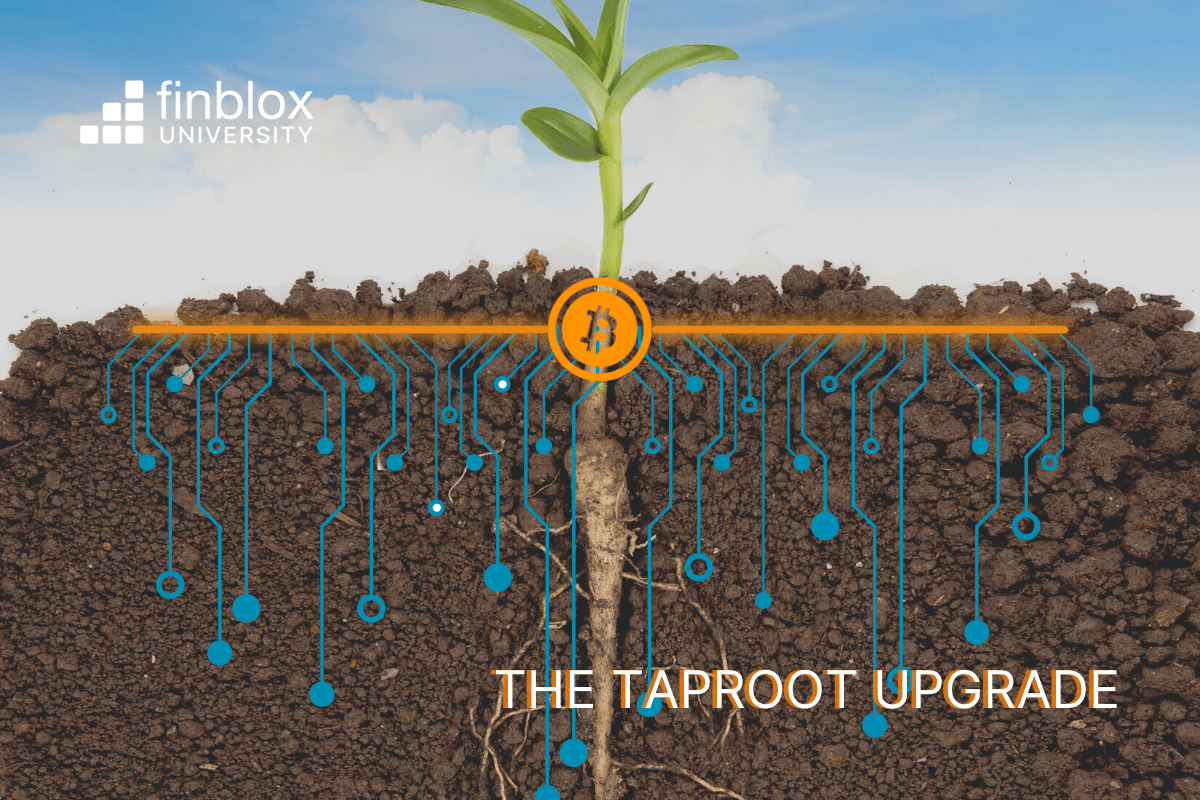Learn all about the Taproot upgrade, including its benefits, development history, and multisignature technology!
The Taproot upgrade was the single largest upgrade for Bitcoin since 2017, when the Segregated Witness (SegWit) first came into effect and allowed more transactions to be packed into a block. Taproot allows for three primary benefits:
- Individual signatures can be combined into a single multi-signature and verified together, rather than separately. If you recall from one of our earliest articles about the blockchain - each block that is added to the blockchain has to be verified by the correct referencing hash before it is accepted. Furthermore, there is a timer of about 10 minutes per block to ensure that proof-of-work is being done. You can imagine how cumbersome it is to verify hundreds of individual signatures before they are aggregated!
- Because individual signatures are lumped together into a multi-signature, there is greater privacy. It becomes more difficult to pick apart and trace each participant's transaction inputs, due to the scrambling effect.
- Smaller and less data-intensive transactions are possible, enhancing Bitcoin's scalability. With the combination of signatures, the entire blockchain becomes much more organized - and smart-contract transactions can blend in with simple transactions, allowing for a greater degree of complexity and freedom in their development.
Why was Taproot developed?
The Taproot proposal was first submitted by Greg Maxwell of the Bitcoin Core group in 2018, but did not reach significant development until 2020 - when Peter Wuille (who wrote the three Bitcoin Improvement Proposals that became part of Taproot), Maxwell, Tim Ruffing, AJ Townes, and Jonas Nick all came together to implement the project.
The motivation behind the project was simple: increase the scalability and ability of Bitcoin to host smart contracts without the need for a hard fork - which had notoriously split the network in 2017 due to SegWit. SegWit had created a series of controversies, including a reliance on off-chain data which eventually pushed a group of developers to form Bitcoin Cash (BCH).
On June 12th, 2021 - over 90% of Bitcoin miners reached consensus and pushed for the Taproot upgrade to move forward. By November 2021, Taproot became fully-activated at block 709,632 in Bitcoin Core version 21.1.
How does Taproot work?
Previously, Bitcoin transactions were verified using the Elliptic Curve Digital Signature Algorithm (ECDSA), which required one unique signature per transaction. However, this was an inefficient use of block space given that each block was only about 1MB in size.
The Taproot upgrade introduced Schnorr multisignatures, which combines all of the participating signatures into a batch after they leave the sender(s) - and before they reach the receiver. Each Schnorr multisignature is a uniform 64 bytes regardless of how many signers there are, which massively improves the space usage and efficiency of transactions.
Furthermore, the Taproot upgrade came with three additional Bitcoin Improvement Proposals (BIPs):
- The first proposal (BIP-340) was the replacement of the ECDSA digital signature scheme with Schnorr multisignatures, as mentioned.
- The second (BIP-341) was to activate Merklized Alternative Script Trees (MAST), which combines complex Bitcoin transactions into a single hash. This helps reduce transaction fees and minimizes space usage.
- The third proposal (BIP-342) implemented the use of Tapscript. Tapscript is a new scripting language that will enable more flexibility in future Bitcoin upgrades.
The Takeaway:
In the near future, we may witness more users and developers migrating over to the Lightning Network (Bitcoin's Layer-2 solution) due to the Taproot upgrade - which makes it cheaper, more flexible, and more private to use. We might also expect to see smart-contract market share shift significantly from Ethereum and other major platforms over to Bitcoin.
Meanwhile - you don't have to wait for all of this to happen to start earning rewards on your Bitcoin! As of this moment, Finblox offers a flat 4% APY on BTC that is compounded and paid daily. Who knows? Maybe the Taproot upgrade will make your Bitcoin rewards worth substantially more than when you started.
Thanks for reading! Please subscribe if you haven't already - and stay tuned for our next article, which will take a deeper dive into Bitcoin's Lightning Network.
This content is provided for informational purposes only, and should not be relied upon as legal, business, investment, or tax advice. You should consult your own advisers as to those matters. Charts, graphs and references to any digital assets are for informational and illustrative purposes only.


